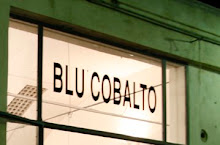
A través del Arte, el hombre ha representado la guerra, el retrato, las costumbres, la caza, la industria, la política, el paisaje natural y urbano, ……., ha interpretado el amor, la alegría, la locura, el horror, …….. Pero a pesar de ello, siempre hay algo que en el arte no se ha experimentado lo suficiente; tal vez la puesta en escena de la boda ó quizás su ceremonia.
La boda puede ser descrita como representación, poesía visual, happening, acción en vivo, performance colectiva, ……. La boda contemporánea europea ya sea religiosa ó civil conserva parte de los rituales romanos y parte de los rituales de los pueblos de Europa en los objetos, atuendos y ritos que han sido trasmitidos a nuestra cultura a través de la tradición judeo-cristiana.
En el siglo XIX, la Iglesia estableció el rito de la boda y cada religión impone su propio ritual en la ceremonia.
En el trecento italiano, Giotto interpretó “La boda de la Virgen”, como temática representativa y perduró hasta principios del siglo del XIX. Durante el Renacimiento, “La boda de la Virgen” fue pintada por Rafael, donde nos presenta una alegoría sobre el casamiento. Veronés representó “Las Bodas de Caná” como un gran banquete en un Palacio Veneciano. Ghirlandaio es el único pintor que en Santa María Novella de Florencia pinta todo el ritual del matrimonio de la Virgen María, utilizando la imagen de la noble Giovanna Tornabuoni. Botticelli interpretó un lujoso banquete nupcial en un marco arquitectónico en plena naturaleza. Pero quizás los dos ejemplos más claros de la boda en el arte son “El Matrimonio Arnolfini” de Van Eyck, que representa a la pareja de frente y de pie, la esposa está embarazada; compone con un alarde de pequeños detalles de vida en común. En el Romanticismo la boda solo era una alegoría del pasado, una representación de la Leyenda. Hugges, nos presenta a una Ophelia vestida de novia, flotando en río suicidada.
Durante el siglo XIX ni siquiera la boda fue fuente de inspiración para los pintores realistas, o impresionistas, sino si lo fue para los pintores Simbolistas, como Marc Chagall, que realizó diferentes versiones en torno a este tema.
En nuestra contemporaneidad la Boda no ha sido fuente de inspiración, pero si lo ha sido para los fotógrafos Lounka & Julius Schon, que realizaron una Performance en plena espacio público de Roma, la plaza de Santa Maria Maggiore en mayo de 2010.
Otro ejemplo irónico es la del artista chino Zhu Yi en una fotografía en la exposición de arte chino de 1998 en Barcelona, sobre un fondo de rosas, el artista viste un vestido largo verde, mientras la novia está a su lado de pie y en paños menores; como foto recuerdo.
La boda en nuestra sociedad tecnológica y globalizante pone de manifiesto lo frívolo y lo banal del ser humano. La boda se ha convertido en una fiesta más, es decir, una imagen en desuso, una forma de glamour que ha perdido su valor intrínseco y espiritual del rito de antaño.
María Jesús Cueto
Bilbao 29 enero 2010
Through art, man has represented war, portrait, customs, hunting, industry, politics, the natural and urban landscape, ……., he has interpreted love, happiness, madness, horror, ….. but despite this, there is always something that art has not experimented enough; this is perhaps the staging of the wedding or its ceremony.
The wedding could be described as representation, visual poetry, happening, live action, collective performance, ….. the contemporary European wedding, be it through the church or civil courts, preserves part of the Roman rituals and partly the rituals of the European nations in the objects, clothing and customs that have been transmitted to our culture through the Jewish-Christian tradition.
In the 19th century, the church established the wedding rites and each religion imposed its own rituals on the ceremony.
In 14th century Italy, Giotto interpreted “The Wedding of the Virgin”, as a representative theme and one which remained until the 19th century. During the Renaissance period, “The Wedding of the Virgin” was painted by Rafael, where he presents us with an allegory about marriage. Veronés represented “The Weddings at Cana” as a grand banquet in a Venetian palace. Ghirlandaio is the only painter in the Santa Maria Novella in Florence, who painted the entire marriage ceremony of the Virgin Mary using the image of the Nobel Giovanni Tornabuoni. Botticelli interpreted a luxurious nuptial banquet in an architectural framework in the heart of nature. Perhaps the two clearest examples of the wedding in art are “The Marriage of Arnolfini” by Van Eyck, which represents the couple standing face on, the wife is pregnant; his composition includes an ostentation of small details of married life. In Romanticism the wedding was only an allegory of the past, a representation of the legend. While Hugges presents us with an Ophelia dressed as a bride, floating in a river, a suicide.
During the 19th century not even the wedding was a source of inspiration for the realist painters, or the impressionists, although it was for the symbolists, such as Marc Chagall, who produced several versions in relation to this theme.
In contemporary times the wedding has not been a source of inspiration , but it has been for the photographers Lounka & Julius Schon, who created a performance in a public space in the centre of Rome in the Piazza di Santa Maria Maggiore, in May 2010.
Another ironic example is that of the Chinese artist Zhu Yi who, in an exhibition in Barcelona in 1998, exhibited a photograph, on a background of roses, of the artist in a long green dress, while his bride stood beside him in her underwear; like a photographic souvenir.
The wedding in our technological and global society manifests the frivolous and banal characteristics of the human being. The wedding has been converted into just another party, that is to say, an image in disuse, a form of glamour that has lost the intrinsic and spiritual value of the ceremony of ages past.
María Jesús Cueto
Bilbao 29 enero 2010









No hay comentarios:
Publicar un comentario